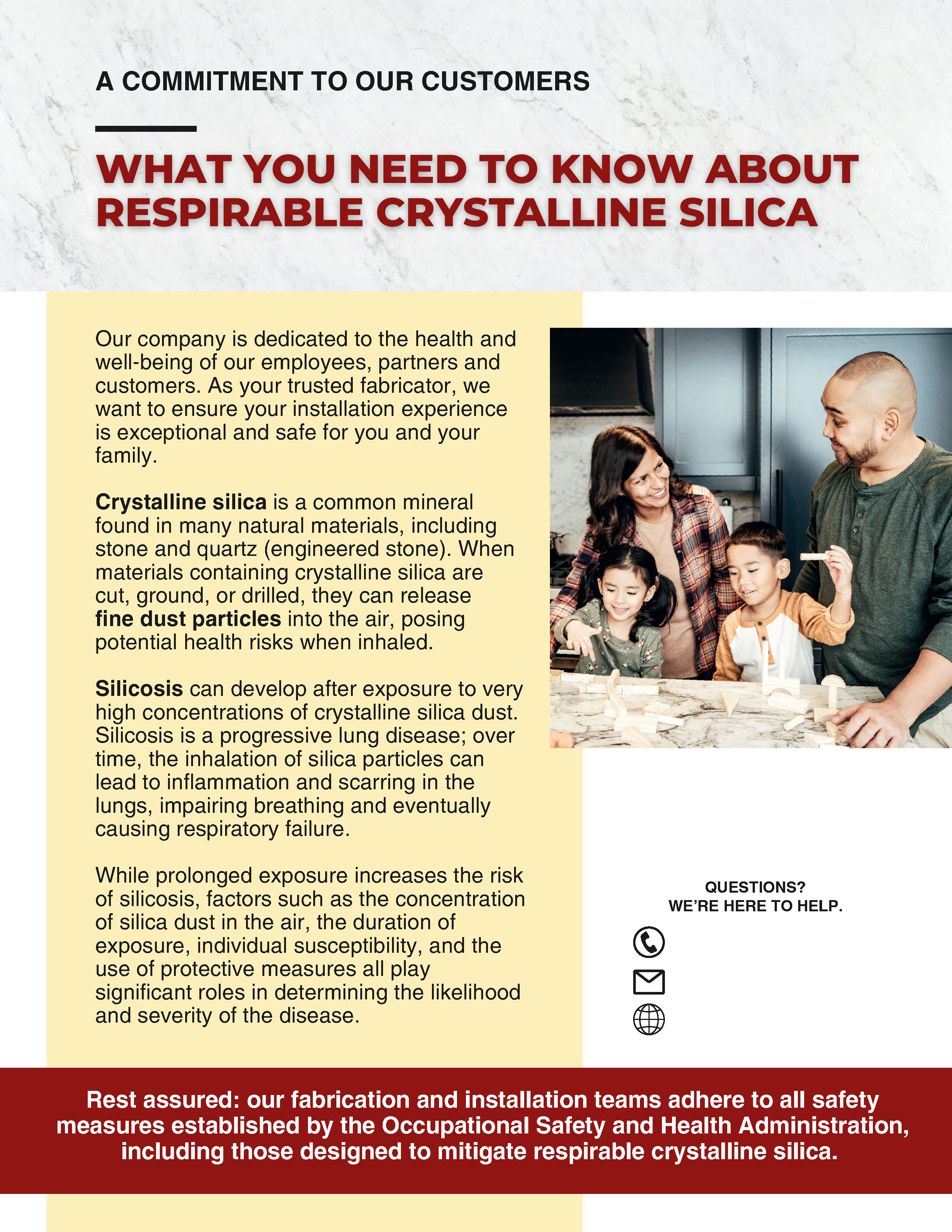Silica Resources
Essential tools, training, and guidance to help you build a strong safety culture and manage respirable crystalline silica (RCS) risks in your shop.
Silica Dust Exposure Prevention Training
ISFA has partnered with Ving, a leading safety training provider, to launch a comprehensive training series for business owners, supervisors, and employees. This program equips teams with critical silica safety skills to create safer, healthier workplaces.
Protect your team — explore ISFA’s Silica Dust Exposure Prevention Training and get started today.
Silica Safety Documents
Access essential guidance for workplace silica exposure assessment, developed in partnership with the Natural Stone Institute and Yale School of Medicine to establish clear best practices for air monitoring and reporting.
Available Resources:
- 2024 Yale Medical Surveillance Guidance (English) — NEW!
- Yale School of Medicine Medical Surveillance Literature Review (English) - NEW!
- Fabricator Guidance for Workplace Silica Exposure Assessment
- Sampling Firm/Consultant Guidance for Workplace Silica Exposure Assessments
What's Inside:
- How to schedule air monitoring and select qualified consultants
- Documentation and reporting standards for sampling firms
- Regulatory and best practice-based recommendations for fabricators
Consumer Silica Safety Flyer

Educate your customers and showcase your commitment to jobsite safety with ISFA's Respirable Crystalline Silica Safety Flyer. This easy-to-understand handout explains:
- What respirable crystalline silica is
- How your shop reduces dust exposure
- The importance of adhering to industry-leading safety standards
Customizable:
Add your logo and contact info directly in the PDF.
Need help? Email INFO@ISFAnow.org and we'll assist with a customized version for your business.
Additional Safety Resources

